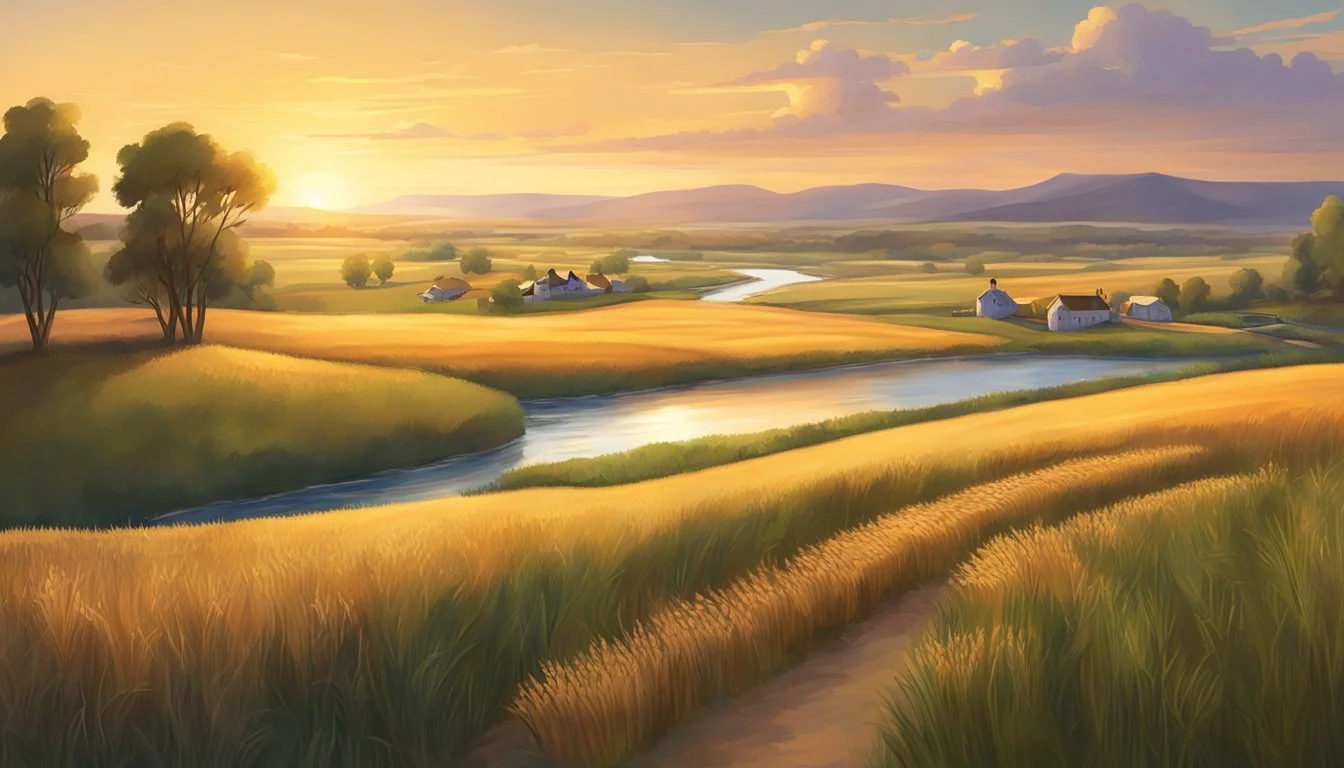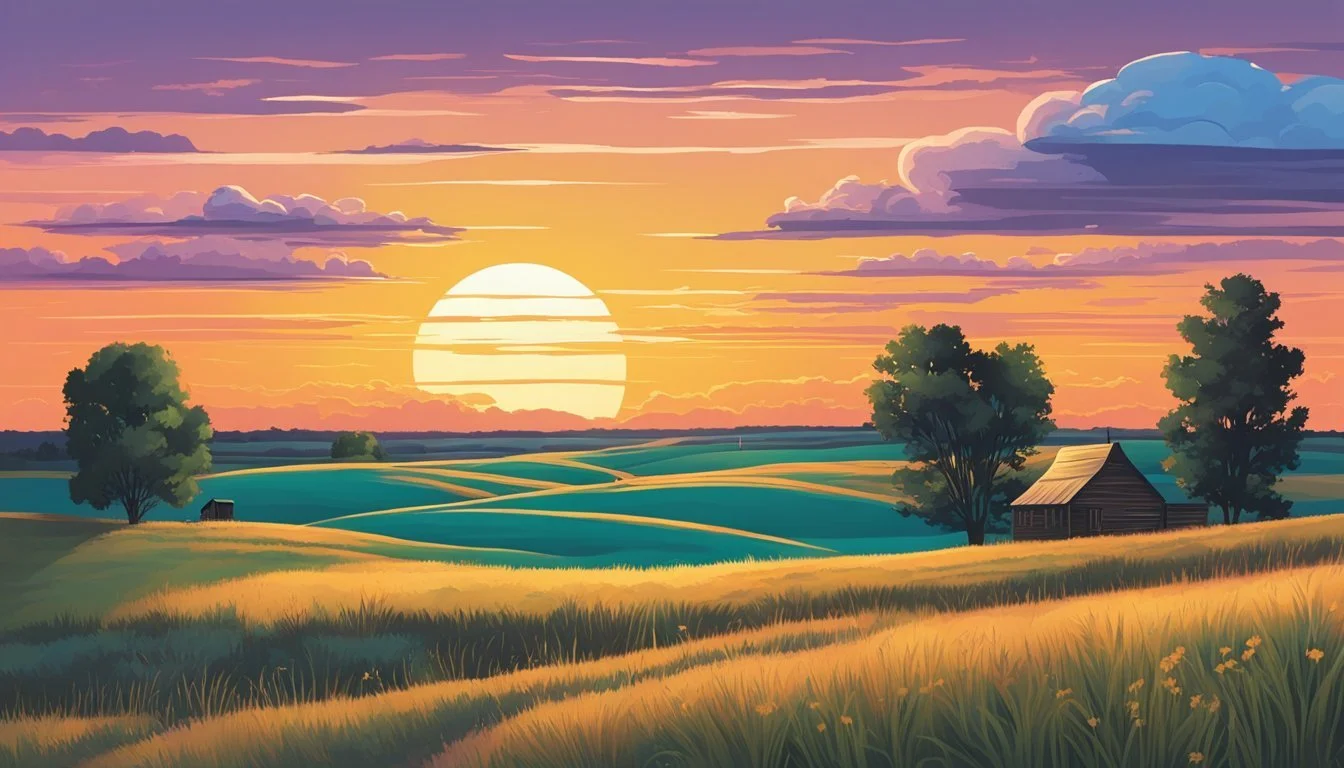5 Compelling Documentaries on Saskatchewan
Exploring the Prairie Province's Hidden Stories
Saskatchewan's rich history and diverse landscapes have inspired numerous compelling documentaries. These films capture the essence of the province, from its vast prairies to its unique cultural stories and social issues.
Documentaries about Saskatchewan offer viewers a window into the province's vibrant culture, natural beauty, and important historical events. From wildlife conservation efforts to profiles of influential figures, these films provide valuable insights into the character and challenges of Canada's breadbasket province. The following selection highlights five particularly noteworthy documentaries that showcase different aspects of Saskatchewan's identity.
1) From the Sky to the Praries: Filming Saskatchewan
Saskatchewan's vast prairies and dramatic skies have captivated photographers and filmmakers for decades. The province's nickname, "Land of the Living Skies," reflects its ever-changing celestial canvas.
Aerial photography has played a crucial role in documenting Saskatchewan's landscape. Over 7,000 photographs capturing the essence of the province are now part of a permanent collection at the University of Saskatchewan Archives and Special Collections.
These images showcase Saskatchewan's agricultural heritage, with 40% of Canada's cultivated farmland located within its borders. The contrast between dark skies and vibrant canola fields creates stunning visuals that epitomize the region.
Grasslands National Park offers filmmakers a unique opportunity to capture untouched prairie landscapes. Spanning 730 square kilometers, it provides a glimpse into pre-settlement Saskatchewan.
The park's lack of light pollution makes it ideal for astrophotography and night sky documentaries. Filmmakers can capture stunning shots of the Milky Way and other celestial phenomena against the backdrop of pristine grasslands.
2) A Prairie Story: Life in Saskatchewan
"A Prairie Story: Life in Saskatchewan" offers an intimate glimpse into the daily experiences of those who call the Canadian prairies home. This documentary captures the essence of Saskatchewan's vast landscapes and tight-knit communities.
Viewers are transported to small towns and family farms, witnessing the challenges and triumphs of rural life. The film showcases the resilience of Saskatchewan residents as they navigate harsh winters and unpredictable harvests.
Through candid interviews, long-time residents share their deep connection to the land and their commitment to preserving prairie traditions. The documentary also explores how modern technology is shaping agricultural practices in the region.
Stunning cinematography highlights Saskatchewan's natural beauty, from golden wheat fields to expansive skies. The changing seasons provide a visual backdrop to the stories of adaptation and perseverance.
"A Prairie Story" delves into the cultural mosaic of Saskatchewan, featuring Indigenous perspectives and the contributions of diverse immigrant communities. It paints a nuanced portrait of a province rich in history and poised for future growth.
3) Saskatchewan's Indigenous Narratives Revealed
This documentary explores the rich oral traditions of Saskatchewan's Indigenous peoples. It focuses on the Woodland Cree, known as Nihithawak, in northern Saskatchewan.
The film showcases how storytelling reinforces Cree worldviews, culture, and language. It demonstrates the importance of these narratives in passing down cultural teachings to younger generations.
Viewers gain insight into the significance of Aboriginal Storytelling Month, celebrated each February in Saskatchewan. The documentary features interviews with Indigenous storytellers who are working to preserve their culture and language.
It also highlights the efforts of researchers and cultural organizations to document and share Indigenous histories. The film draws on resources from the Indigenous Saskatchewan Encyclopedia, showcasing significant figures and events.
Through intimate portraits and community gatherings, the documentary reveals how oral traditions continue to shape Indigenous identity in Saskatchewan. It offers a compelling look at the ongoing efforts to maintain and revitalize these vital cultural practices.
4) Saskatchewan Through the Eyes of Farmers
Saskatchewan's agricultural landscape takes center stage in several compelling documentaries. These films offer intimate glimpses into the lives and practices of the province's farmers.
"Depth of Field: Films About Farming" showcases five Saskatchewan farms. It captures the beauty of fall foliage while highlighting sustainable farming methods. The series features diverse operations, including livestock, seed production, and dairy farming.
Another documentary, "Boom or Bust on the Simpson Family Farm," explores the challenges faced by modern family farms. It follows two brothers as they navigate the changing agricultural landscape in Saskatchewan.
These films shed light on the decreasing number of family farms in the province. They document the resilience and adaptability of Saskatchewan farmers in the face of industry changes.
The documentaries also emphasize sustainable practices. They showcase techniques like rotational grazing, seed saving, and soil health management used by Saskatchewan farmers.
Indigenous farming practices are featured in some films as well. These documentaries highlight efforts to reconnect with traditional agricultural methods and preserve cultural heritage.
5) Historical Journeys Across the Saskatchewan Plains
The Saskatchewan History and Folklore Society organizes trail walks that explore the province's rich past. These journeys allow participants to connect with the land and its stories.
In August 2023, walkers completed the fifth iteration of these historical treks. The walks attract diverse participants, including notable figures like Louise Halfe, eager to engage with Saskatchewan's heritage.
These expeditions traverse the vast Saskatchewan plains, passing by monuments and signs that mark significant historical sites. Walkers often find their minds wandering, contemplating the region's complex history.
The walks serve as a unique way to reconcile shared histories and gain new perspectives on Saskatchewan's cultural landscape. Participants have the opportunity to learn about Indigenous history and traditions firsthand.
These journeys offer more than just physical challenges. They provide a chance for introspection and connection with the land. Walkers experience the prairies' vastness while uncovering hidden stories embedded in the landscape.
The Cultural Impact of Documentaries
Documentaries serve as powerful tools for shaping cultural narratives and influencing public opinion. These films often shed light on important social issues, inspiring viewers to engage with topics they might otherwise overlook.
By presenting real-life stories and events, documentaries can evoke strong emotional responses and foster empathy among audiences. This emotional connection can lead to increased awareness and support for various causes.
Some documentaries have sparked significant social movements or policy changes. For example, environmental documentaries have contributed to growing concern about climate change and support for sustainability initiatives.
In Canada, documentaries have played a crucial role in chronicling the nation's history and cultural identity. From early travelogues to modern exposés, these films have documented the country's growth and social evolution.
Indigenous filmmakers have used documentaries to highlight important issues affecting their communities. These works have raised awareness about Indigenous rights and challenged prevailing narratives in Canadian society.
Documentaries also serve as valuable educational resources, often finding their way into classrooms and academic discussions. They provide students with engaging visual content to supplement traditional learning materials.
The impact of documentaries extends beyond their initial release. Many continue to influence cultural discourse years after their debut, becoming reference points for ongoing social and political debates.
Exploring Saskatchewan's History
Saskatchewan's rich history spans thousands of years, encompassing Indigenous cultures and European settlement. The province's past is marked by significant cultural developments and economic transformations that have shaped its identity.
Indigenous Heritage and Narratives
The land now known as Saskatchewan has been home to Indigenous peoples for millennia. First Nations groups like the Cree, Dene, and Saulteaux developed complex cultures deeply connected to the land. Their traditional practices, oral histories, and spiritual beliefs continue to influence the province today.
Archaeological evidence reveals ancient campsites and buffalo jumps used by early inhabitants. The arrival of European fur traders in the 18th century brought dramatic changes to Indigenous ways of life. Treaties signed in the late 1800s formalized relations between First Nations and the Canadian government.
Economic Development Over Time
Saskatchewan's economy has evolved significantly since becoming a province in 1905. Early settlers faced harsh conditions as they established farms on the prairies. The province became known as Canada's breadbasket, with wheat farming dominating agricultural production.
The discovery of potash and uranium in the mid-20th century diversified Saskatchewan's economy. Mining became a major industry alongside agriculture. Oil and natural gas extraction also grew in importance.
Recent decades have seen expansion in sectors like technology and renewable energy. Despite economic shifts, agriculture remains a cornerstone of Saskatchewan's identity and prosperity.
Environmental Themes in Saskatchewan Documentaries
Saskatchewan's natural landscapes and environmental challenges feature prominently in local documentaries. Filmmakers explore conservation efforts for the province's diverse ecosystems and examine the impacts of a changing climate on the region.
Flora and Fauna Conservation
Saskatchewan's documentaries showcase the rich biodiversity of the province's prairies, forests, and waterways. Films highlight efforts to protect endangered species like the burrowing owl and swift fox. Conservation initiatives for native plant species are also explored, emphasizing the importance of preserving tallgrass prairies and boreal forests.
Documentaries often feature the work of local wildlife photographers and naturalists who document Saskatchewan's unique flora and fauna. These films raise awareness about habitat loss and fragmentation due to agriculture and urban development. They also spotlight successful restoration projects and the role of provincial parks in safeguarding ecosystems.
Impact of Climate Change
Saskatchewan documentaries delve into the effects of climate change on the province's environment and economy. Films examine shifting weather patterns, including more frequent droughts and severe storms. The impact on agriculture, a key sector in Saskatchewan, is a common focus.
Documentaries explore adaptation strategies for farmers and ranchers facing new climate realities. They also highlight renewable energy initiatives in the province, such as wind and solar projects. Some films investigate the tension between Saskatchewan's fossil fuel industry and the need for emissions reduction.
Climate change effects on northern communities and ecosystems receive attention in documentaries. These films often feature Indigenous perspectives on environmental stewardship and traditional knowledge in addressing climate challenges.



